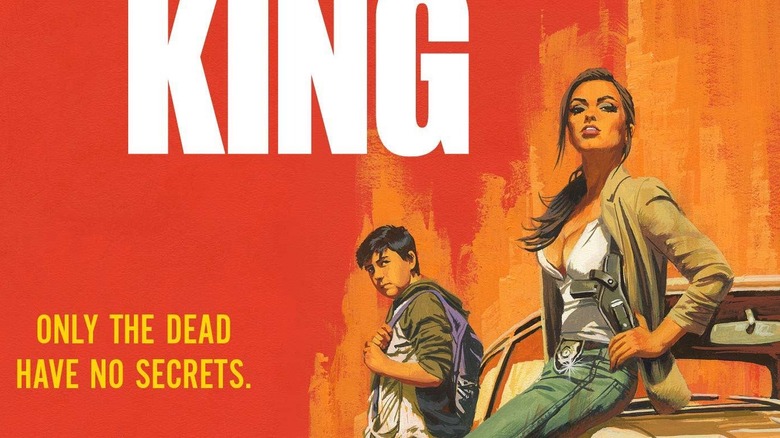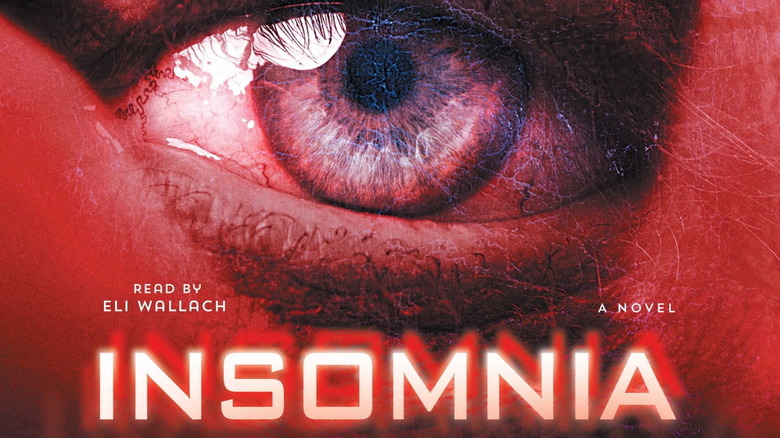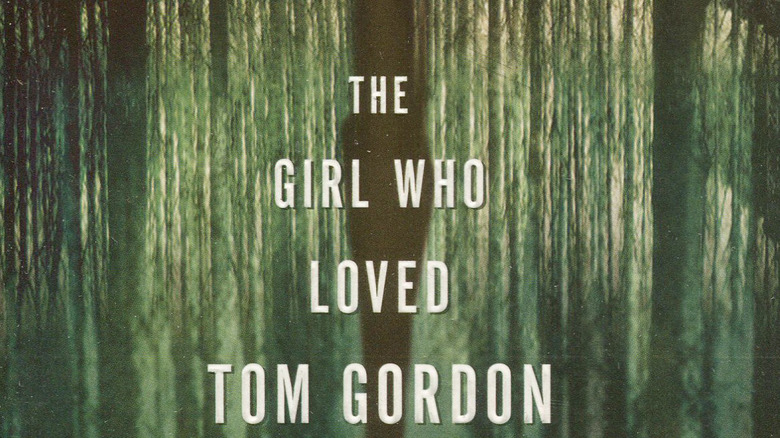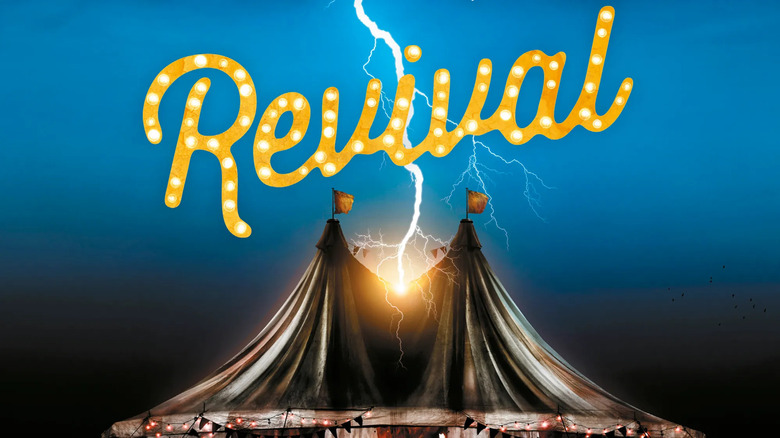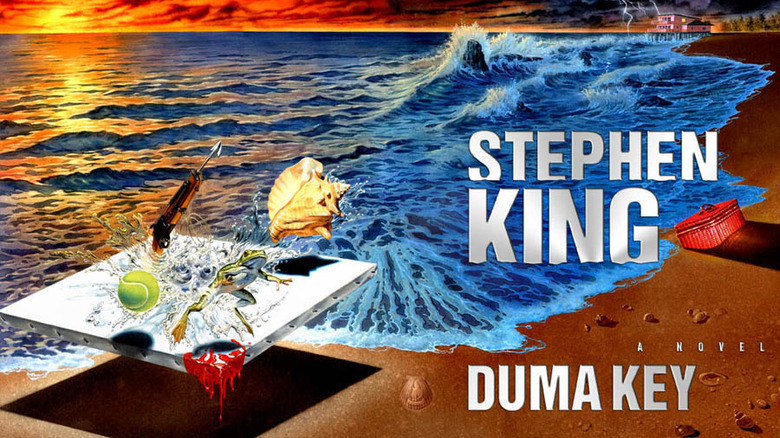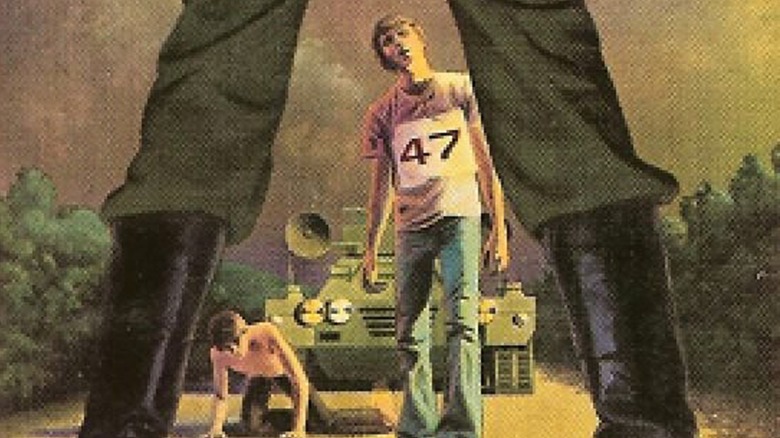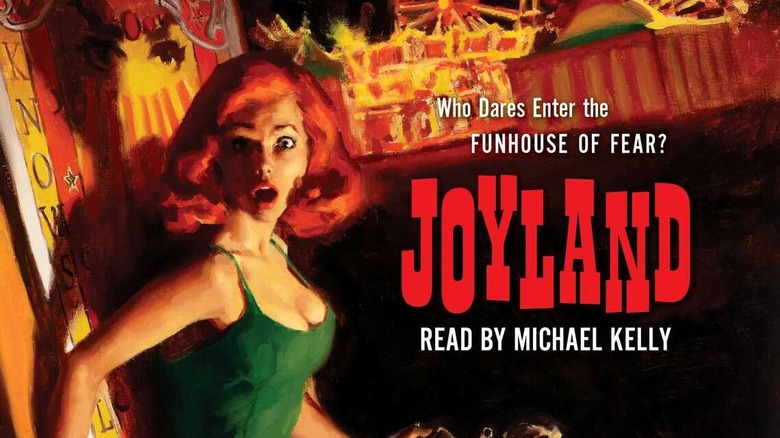7 Stephen King Books That Should Be Movies, Ranked
Stephen King is, as his name suggests, the king of horror fiction (while occasionally delving into other genres). The combination of his vivid writing style, characters with unique personalities and special abilities, and epic stories that unfurl with riveting suspense make his work rife for cinematic interpretation. Within these spine-chilling stories, King infuses keen observations on the human condition, and how evil — both supernatural and real — manifests in our society. Stephen King's literary works have produced some of the greatest films of all time including Stanley Kubrick's "The Shining," Brian De Palma's "Carrie," and Rob Reiner's "Stand By Me." Over 70 of his novels and short stories have been adapted into films or television shows, but since he is such a prolific writer — often churning out several books each year — there are countless that have yet to be adapted. This list ranks seven of Stephen King's engrossing page-turners that would be incredible to see on screen.
7. Later
"Later," Stephen King's version of "The Sixth Sense," features a teenage boy named Jamie Conklin with the ability to communicate with ghosts who cannot tell a lie. Blumhouse was set to produce it as a miniseries starring Lucy Liu, but there have been no updates on the project since 2022. Similar to M. Night Shyamalan's acclaimed film, "Later" blends poignant moments of sadness, chilling gore of the ghosts' gruesome deaths, and thoughtful contemplation of our mortality and connection to dearly departed loved ones. "Later" also uses the gritty backdrop of New York City, with its corners and shadows rich in history and hidden mysteries, to foreground a story that juxtaposes Jamie's coming-of-age with the contemplation of mortality. But what would make a film adaptation of "Later" so exciting is its balance of different genres, specifically the intense emotion of bildungsroman narratives with the intrigue of a crime thriller.
6. Insomnia
Not to be confused with Christopher Nolan's compelling Alaskan mystery "Insomnia," Stephen King's novel of the same name employs the disease as a catalyst for his protagonist's connection to the supernatural. After the death of his wife, Ralph Roberts begins having bizarre and unsettling visions and wandering on the street in the middle of the night. The use of strong visual effects could make the images of his nightmares really pop on screen. "Insomnia" takes place in Stephen King's renowned Derry, Maine, and features references to both "It" and "The Dark Tower." "Insomnia" could help expand the Derry Cinematic Universe! Much like his epic "It," the dense novel is over 800 pages, making film adaptation a challenge. Nevertheless, it would be fascinating to see how a filmmaker interprets the complex inner workings of Ralph's mind, especially the blurs between reality and hallucination.
5. The Girl Who Loved Tom Gordon
Stephen King's "The Girl Who Loved Tom Gordon" would be perfect for an indie filmmaker because the simple narrative takes place in the Appalachian wilderness and would require a very limited cast. Since the story centers on a nine-year-old girl named Trisha McFarland who separates from her mom and brother on a hike, a film adaptation would have to rely on a phenomenal, star-making child performance. 20 years ago, this certainly could have starred Dakota Fanning. Once Trisha's food and supplies dwindle, she begins to imagine having conversations with her idol, the baseball player Tom Gordon, and has strange visions of an evil lurking in the woods. A genre with roots dating back to "The Lord of the Flies," survival horror has often included younger children, allowing the audience to experience unsafe environments through the heartbreaking prism of their innocence. It would be fascinating to see a director frame the foreboding woods subjectively to reflect Trisha's growing blur between reality vs. her imagination as her hunger and thirst creep in. A film adaptation with Chris Romero serving as a producer was announced in 2019, but there's been no movement as of publication.
4. Revival
With Guillermo del Toro tackling "Frankenstein" and Maggie Gyllenhaal reimagining "Bride of Frankenstein," it seems the perfect time for a filmmaker to breathe life into Stephen King's electrifying version of this classic tale. While not directly taken from Mary Shelley's novel, "Revival" melds its existential questioning of our origins and the afterlife with a Lovecraftian finale of epic proportions and scathing religious critique. Much like the finale of "It" with the giant spider, there are large-scale visual nightmares that would be difficult to pull off, but very haunting if done well. "Revival" explores the lives of Jamie from his childhood in New England to his heroin addiction as an adult, and his stalker Charles Jacobs, a pastor who becomes a carnival husker and experiments with electricity after the death of his wife and child. Since the story spans the main characters' lives across decades, it would require a pair of heavyweight actors to give their intricate relationship the chilling tension it deserves.
3. Duma Key
One of the coolest aspects of "Duma Key" is the Florida setting; Stephen King uses the sweltering heat, jagged shells, abundant foliage, and haunted ghost ships to create a striking coastal atmosphere for his spooky story. It revolves around Edgar, a wealthy contractor who loses his arm and suffers a brain injury during a worksite accident. After his wife leaves him due to his psychological instability, he rents a bright pink beach house on the island of Duma Key. In another attempt to find some inner peace, he returns to his former hobby of making art. His paintings become supernatural windows into psychic visions and unleash an ominous force of evil. It's a really inventive concept, and the focus on such a visual medium makes the story ideal for cinematic interpretation, especially when combined with the vivid tropical setting and its labyrinthine mysteries of the shore and sea.
2. The Long Walk
It's been a while since we've seen a captivating dystopian thriller, and "The Long Walk" would make a excellent addition to the genre. However, it would take a skilled director to make what is, as the title implies, one long walk feel suspenseful and terrifying on screen. "The Long Walk" is set in a future America overruled by a totalitarian regime that hosts an annual event forcing teenage boys to walk four miles per hour without stopping. Three strikes, you're out. The last man standing wins. The prize? Whatever the winner wants for the rest of their life. "The Long Walk" brings to mind other popular movies such as "The Hunger Games" or "Squid Game." Audiences have a strange fascination with stories about life-and-death competitions for wealth and happiness. Perhaps it's because this era of economic and political instability has made it feel like even more of a dog-eat-dog kind of world. A film adaptation of "The Long Walk" could be a truly pulse-pounding and thought-provoking viewing experience. It's apparently going to get the live-action treatment thanks to "The Hunger Games" director Francis Lawrence, but things are still in pre-production.
1. Joyland
Carnivals, depicted in films such as "Nightmare Alley" and "Freaks," have always been a mesmerizing cinematic backdrop, one that juxtaposes sparkling wonder with enigmatic oddities. It has always been a space for both joy and terror. Stephen King's "Joyland" is his pulpy homage to crime novels that follows a young carnival worker who hunts for the killer of a young girl brutally murdered on the haunted house ride. Her spirit still haunts the amusement park. Stephen King uses this setting to paint a colorful world with its own vernacular and cast of quirky characters. It would be interesting to see how a director would bring King's detailed rhythms of midway life onto the screen, juxtaposing the jovial iconography of cotton candy and puppy dog mascots with the twisted mystery of the funhouse or hall of mirrors — bringing to mind Jordan Peele's boardwalk sequence in "Us." "Joyland" blends nostalgic warmth, the supernatural, and the gritty underbelly of the fairground lifestyle. It has a thrilling climax that takes place on a swaying Ferris Wheel in the middle of a raging storm that would look amazing on screen.

